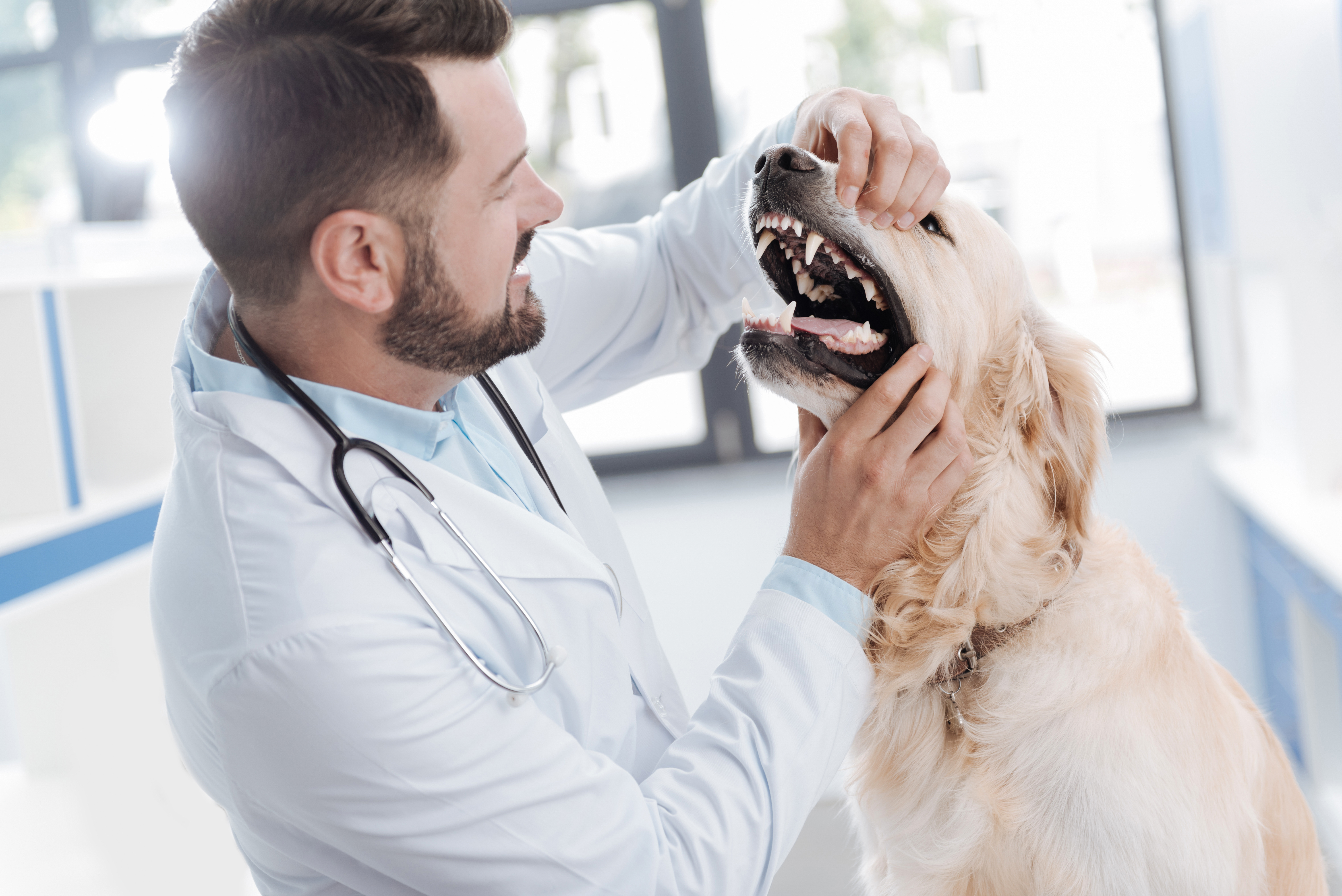
Plaque & bad breath
Bad breath in dogs or cats isn’t just a nuisance—it’s often a sign of periodontal disease, a common and progressive dental condition that affects more than 80% of dogs and 70% of cats by the age of three. Left untreated, it can lead to tooth loss, gum pain, and even impact your pet’s heart, kidneys, and overall health.
What Is Periodontal Disease?
Periodontal disease is caused by plaque and tartar buildup on your pet’s teeth, which leads to gum inflammation and infection. Over time, this can damage the structures that support the teeth, including the gums and jawbone.
The 4 Stages of Periodontal Disease in Dogs and Cats
Understanding the stages helps you spot signs early and take action before things get worse.
1. Gingivitis
- Red, swollen, or bleeding gums
- Caused by plaque buildup
- Reversible with proper dental care
2. Early Periodontitis
- Tartar (hardened plaque) forms
- Mild bone loss begins
- Bad breath becomes more noticeable
3. Moderate Periodontitis
- Gum recession and more bone loss
- Teeth may become loose or painful
- Inflammation may worsen
4. Advanced Periodontitis
- Severe bone destruction
- Tooth loss, gum abscesses, and serious infections
-

Brushing your pet's teeth is essential
What Contributes to Periodontal Disease?
Several factors can increase the risk of dental disease in pets:
- Soft diets that stick to teeth and promote plaque
- Small breeds or flat-faced dogs like Chihuahuas and Bulldogs are more prone due to crowded teeth
- Chronic conditions like diabetes or kidney disease can make oral health more challenging
- Inexistent cleaning or dental care routines
How to Manage and Prevent Periodontal Disease in Pets
A combination of professional care and at-home hygiene is key to keeping your pet’s mouth healthy.
Professional Dental Cleaning
Performed by your vet, this includes scaling, polishing, and, if needed, treatment of gum disease.
Use of Antimicrobial Oral Gels
Gels with ingredients like chlorhexidine help control bacteria and reduce plaque buildup between dental visits.
At-Home Dental Care
- Brush your pet’s teeth daily (or as often as possible)
- Use pet-safe toothpaste and dental gels
- Offer dental chews or toys approved by your vet
Recommended Product for Pet Dental Health
When it comes to keeping your pet’s mouth fresh and healthy, having the right products makes all the difference.

Stomodine F Oral Gel: a vet-recommended dental gel designed to support oral hygiene and fresh breath in dogs and cats.
Key ingredients include:
- Chlorhexidine – A broad-spectrum antimicrobial
- Tris-EDTA – Boosts the effectiveness of chlorhexidine by increasing bacterial cell permeability
- Phytosphingosine – Supports the natural skin barrier of the gums
Stomodine F can be easily applied to the gums to help maintain oral cleanliness between professional cleanings.
Contact your vet
Your pet’s dental health plays a big role in their quality of life. Regular brushing, vet checkups, and using the right oral care products can go a long way in preventing gum disease and bad breath.
If your dog or cat has signs like bad breath, red gums, or visible tartar, talk to your vet about a dental checkup—it’s never too late to start a healthier routine.